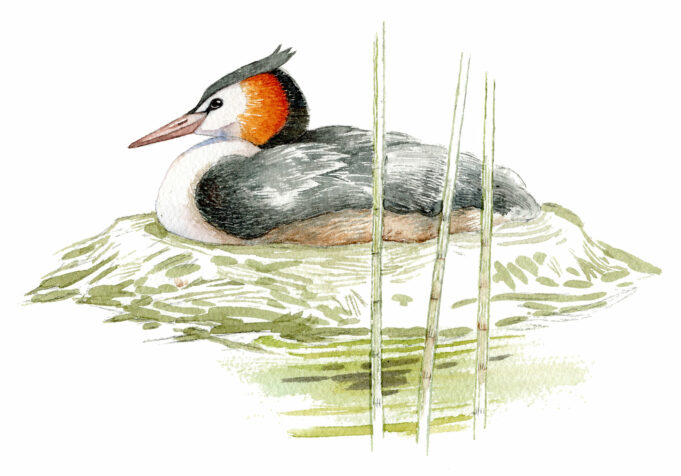Our Winged Friends
Note! Our winged friends signboard will be placed on the ground in the fall of 2024.
Most birds in Finland nest between April and July. The Nature Conservation Act and the EU Birds Directive protect bird nesting and, during the nesting season, all bird species are protected. Nest building and nesting are the most important activities of the year for birds, and the deliberate disturbance of birds, their nests, eggs and chicks is prohibited.
Waterfowl nests are often low down near the water’s edge and the eggs in the nest are clearly visible if the mother has to leave the nest. Unprotected bird eggs are easily eaten by minks and raccoon dogs, for example. During the waterfowl nesting season, it is best to avoid unnecessary noise when moving on or near water. When boating, it’s a good idea to keep a safe distance and not to create big waves.
Finland’s national bird, the Whooper Swan (Cygnus cygnus), arrives from its migration in March-April, when ice still covers waterways. Its haunting, trumpet-like song can be heard for miles. As a species that is faithful both to its habitat and partner, the whooper swan arrives at the same nesting site every year. Adult swans are completely white, while young individuals are greyish and do not get their full white plumage until they are a few years old.

In the shaded vegetation of the water meadow, the great crested grebe (Podiceps cristatus) thrives and nests. It prefers clear waters and dives for small fish, crustaceans and insects. In spring, the great crested grebe builds a floating nest immediately after its colourful courtship display. As a migratory bird, the species only spends the summer in Finland and, in the autumn, returns to southern Europe to winter.
Updated 12.2.2024